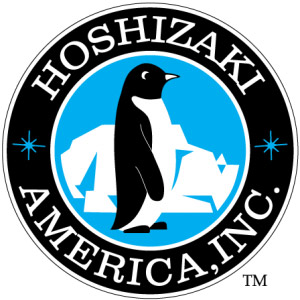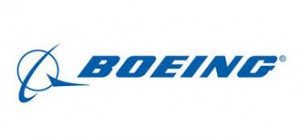by KenBay | Dec 18, 2018
Challenge: To dispose of masking material from the painting of airplanes. During the process, light bulky material, mostly paper, disposable protective clothing, plastic and tape needs to be compacted within the painting area. The material, which includes paint containing chrome, is considered hazardous. They required an industrial waste compactor that could meet the Class II, Division II requirements.
Solution: KenBay designed the RotoPacBlastPac Hazardous and Explosive Environment Waste Compactor.
Result: The custom compactor meets their requirements.
by KenBay | Dec 18, 2018
Challenge: The debris from unpacking the raw material from 6 production lines operating 2 shifts per day reduced the company’s efficiency.
Solution: They selected the KenBay RotoPac industrial compactors with its continuous compaction to receive and compact the debris at the source of the waste, i.e., at the start of each production line where the raw materials were unpacked.
Result: The waste compacted into large polyethylene filled bags weighing over 500 lbs are then removed by forklift eliminating any manual labor involvement.
by KenBay | Dec 18, 2018
Challenge: Disposing of the waste cardboard and plastic shipping and packing materials associated with the production of products placed an undue burden upon them.
Solution: Their founder resolved their company’s problems by ordering the KenBay RotoPac, the leading industrial arm compactor, on Nov. 25th.
Result: By the 27th, the RotoPac was up and running, compacting 5 full bags of waste on the same day. He said: “For our application this machine is just excellent. We’ve been in business for almost 20 years and I have been looking for hand’s-off compactor like this for at least 5 years.”
by KenBay | Dec 18, 2018
Challenge: Two production lines produced a voluminous amount of waste, clogging their facilities. One line was generating 6 gaylords of shrink-wrap per day. Maintenance workers were spending too much time carting and removing the waste. The other line required the collection and compaction of aluminum.
Solution: A standard rotary arm RotoPac was placed at the end of each line.
by KenBay | Dec 18, 2018
Challenge: Reduce the cost of hauling waste to the nearest Waste to Energy facility to make the process cost effective.
Solution: Use the RotoPac with its high compaction ratio to package the waste into 4’ cubes for cost effective transport.
Result: Making the process of hauling waste that here-to- for could not be cost effectively transported long distances to a Waste to Energy facility for incinerating it into energy bricks.
by KenBay | Dec 18, 2018
It won’t come as any surprise to most folks that bulk waste has high associated disposal costs. We’d like to share a story about a West Coast Aircraft Service Facility client of ours who serves the aircraft industry and the waste they produce is considered hazardous, which adds a whole additional level of complexity to the situation! The story begins with the switch to a Cubic Yard Box!
 Jim Kirby works in Paint Operations; the paint masking material contains chrome related primers and requires a Class 1 Fire Protection Unit. Their operations used to consist of using a RotoPac® they rented from KenBay along with a 40 yard roll-off bin. The first round of compaction was done in 55 gallon metal drums, compacted again in the RotoPac and the waste was shipped to their hazardous waste vendor in Tennessee who would put the waste into a cubic yard box and ship the boxes to fuel blend. There were several associated costs with this approach, and as you can imagine, those costs quickly added up to a big expense.
Jim Kirby works in Paint Operations; the paint masking material contains chrome related primers and requires a Class 1 Fire Protection Unit. Their operations used to consist of using a RotoPac® they rented from KenBay along with a 40 yard roll-off bin. The first round of compaction was done in 55 gallon metal drums, compacted again in the RotoPac and the waste was shipped to their hazardous waste vendor in Tennessee who would put the waste into a cubic yard box and ship the boxes to fuel blend. There were several associated costs with this approach, and as you can imagine, those costs quickly added up to a big expense.
One day their hazardous waste vendor made a change that sparked a huge savings for Jim’s company. They started requiring the waste be put into a hazardous waste rated cubic yard box instead of the bags they had used historically. It was important to find the most efficient way to accommodate this change. Since there was already collaborative relationship with KenBay and they were already renting a RotoPac, it made sense to start with KenBay. Don Meis, the founder of KenBay spent time researching the new requirements and he presented a simple solution. There was a way to outfit the RotoPac so that it could compact waste directly into the cubic yard box.
 The modification included the following:
The modification included the following:
- Remove the protection shield
- Stabilize the Unit to ensure the cubic yard box doesn’t move during compaction
- Use a shorter RotoPac drum
- Install guard rails to prevent the boxes from expanding as waste was compacted
That did the trick!
So their old process which required 55 gallon metal drums, a 40 yard roll-off bin, liners, transport to Tennessee and finally shipping in a cubic yard box to fuel blend, was all reduced to onsite waste compaction indoors without exposing the environment to the hazardous waste, with better logistics, better security and lower costs!
We mentioned 90% savings. Can that be true? Let’s take a look at the numbers:
- For the first 6 months of 2015, the costs utilizing the 40 yard roll off and shipping to TN prior to shipping to fuel blend totalled $141,000
- For the second 6 months of 2015, the costs of using a customized RotoPac, compacting on-site and shipping to fuel blend on the west coast totalled $14, 500
- An annual savings of $126,500!
The great part of this story is how they captured all associated costs and eventual savings as a result of making a few changes to their RotoPac compactor. How many of us pay the bills on a monthly basis without wondering how things could be done smarter and more cost effectively?
The costs for the old process came from various sources:
- 55 gallon metal drums
- The roll-off bin had to be kept outdoors, required a lid and regular maintenance and it took up a lot of physical space.
- Liners for the RotoPac
- Labor of transporting waste from paint operations to the outdoors where the 40 yard roll off was kept
- Pulls from the 40 yard roll-off bin cost $20k per pull and they averaged 10 pulls per year.
- Paying the hazardous waste vendor for the labor, fuel and materials required to put waste in a cubic yard box, blend and ship.
In 2016 Jim decided it was time to stop renting the RotoPac from KenBay and purchase it outright and he hasn’t looked back! Contact us at KenBay. Explain your specific sources of waste and we’ll recommend a process that is safe, efficient and cost effective. It would be our pleasure!


 Jim Kirby works in Paint Operations; the paint masking material contains chrome related primers and requires a
Jim Kirby works in Paint Operations; the paint masking material contains chrome related primers and requires a  The modification included the following:
The modification included the following:



